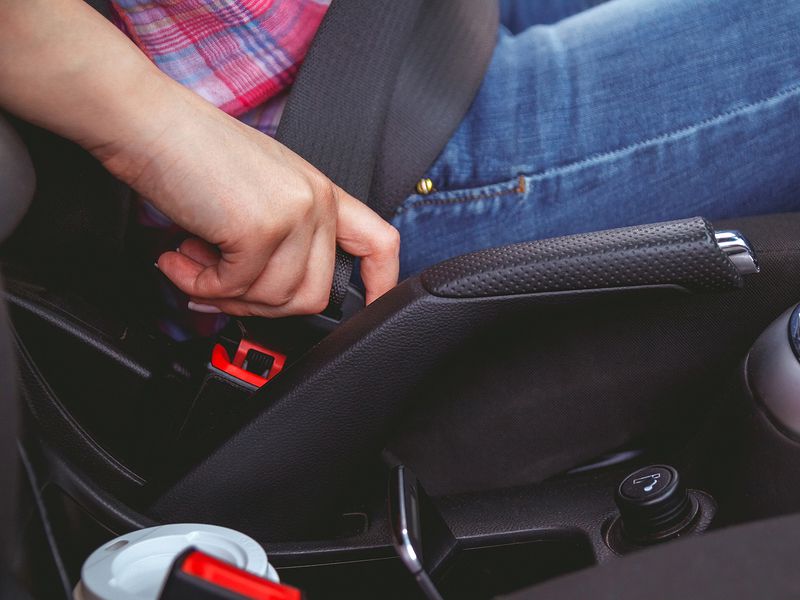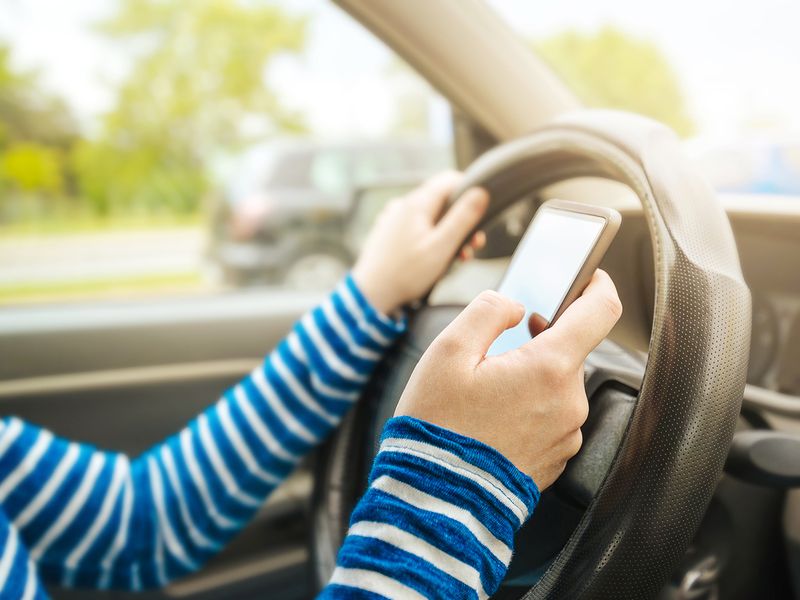Recent Articles
Popular Makes
Body Types
Memorial Weekend Safety: Teen Driving Tips for Beginners

teen millennials in car ・ Photo by Bigstock
The Memorial Day Weekend marks the unofficial start of summer, so it's a great time to review some teen driving tips for beginners. When school’s out, teen drivers on the road increase dramatically and these inexperienced drivers will need all the help they can get. Consider: According to the Centers for Disease Prevention and Control (CDC), “motor-vehicle crashes are the leading cause of death for U.S. teens,” while “Per mile driven, teen drivers age 16 to 18 are nearly three times more likely than drivers age 20 and older to be in a fatal crash.” Which actually makes any time a good time to review these following rules of the road for young drivers.
Don’t drink and drive.
Drinking and driving continue to be a deadly combination for all U.S. citizens, but it’s especially dangerous for teens. Per the latest CDC statistics, of all the drivers aged 16 to 20 who were involved in a fatal car crash, 17 percent had blood alcohol concentration (BAC) levels above .08. Further, it only takes a few drinks to reach that stage, and then muscle coordination, reaction time, perception, and reasoning skills all start to become affected. And that’s in typical drivers. In teens, who generally aren’t used to drinking, the impact is greatly magnified: Younger, more inexperienced drivers are at noticeably more at risk for crashes than older drivers with the exact same BAC levels.

Photo by Bigstock
Wear seatbelts.
Seatbelts have been mandatory in new vehicles since 1968 in this country, and the National Highway Traffic Safety Administration (NHTSA) estimates that about 90 percent of all U.S. drivers now buckle up when they get behind the wheel. But in a country as large as this one, that means roughly 27.5 million drivers don’t regularly use their seatbelts, and their numbers include a disproportionate number of teens. That’s a lot of young drivers who are ignoring what’s still one of the most effective safety measures offered by new vehicles today. Indeed, even as cars add more and more high-tech driver-assistance features, NHTSA notes that just wearing safety belts saves over 13,000 lives each year.

Photo by Bigstock
Don’t drive distracted.
At this stage, most folks know the dangers of texting and driving, with many states making it illegal to do so. Yet a small but significant percentage of people persist in taking the risk, and as you might guess, it’s the youngest drivers who are most likely to be involved in fatal car crashes while distracted by electronics. Think of it this way: NHTSA research shows that either sending or reading the average text requires drivers to take their eyes off the road for about five seconds—long enough to travel 510 feet at 70 mph. Other distractions, such as eating and drinking or fiddling with vehicle controls, are consistently implicated in the road deaths of teen drivers as well.

Photo by Bigstock
Learn how to use your car’s driver-assistance technologies.
As previously mentioned, seatbelts are vital for teen-driver safety. The latest new cars and trucks, however, can supply an incredible range of fresh technologies that raise occupant-protection levels even higher. The thing is, you have to know how they work if you want to take advantage of their benefits, and many people don’t. For instance, in a ground-breaking study from the University of Iowa, 32.2 percent of people surveyed didn’t know what a blind-spot monitor did and 41.7 percent were unsure about forward collision warning; more than 40 percent reported “their vehicle behaving in a manner they were not expecting or in a way that surprised them.”

Photo by Volkswagen
Resist using hands-free technologies.
Given the concerns about teen drivers and smartphones, some people may be tempted to view hands-free phone systems and other voice-recognition technologies as ways to reduce in-vehicle distractions. Well, that’s a temptation you should resist. The fact of the matter is that hands-free setups are “just as distracting” as handheld smartphones for drivers. International research, reported by groups from the U.S. National Safety Council (NSC), clearly shows the brain cannot literally do two things at once and is constantly switching attention away from driving when talking on the phone—regardless of which kind of phone it is. According to the NSC, people can miss seeing up to 50 percent of their driving environment in either case.

Photo by Honda
Run through a “pre-flight” checklist.
This tip builds on a simple premise: The right time to adjust a car’s mirrors, seating position, climate system, etc., is when you’re still parked, not after you’ve already started rolling. Otherwise, you’re once again adding in potential distractions when you should be concentrating on the driving process itself. As for setting up the correct driving position, don’t forget the details, too, like properly adjusting your headrest so that it squarely meets the back of your head in case of a collision. Also remember to check the fuel tank as soon as you turn the engine on, to avoid running out of gas unexpectedly, and be sure your tires are properly inflated, with adequate tread life remaining.

Photo by Bigstock
Don’t speed.
The auto industry is in the middle of a new golden age of performance that includes everything from hot hatches like the 2017 Honda Civic Type-R to revved-up icons such as the 2018 Dodge Challenger SRT Demon. It’s great for older gearheads but a major issue for teen drivers. A recent report on safer teen driving, supported by Ford and the Governors Highway Safety Association (GHSA), indicated that 53 percent of single-vehicle crashes involving male drivers aged 15-17 involved speeding; the rate was 41 percent for female drivers in the same age group. Moreover, the problem goes beyond exceeding the speed limit. Teens also commonly go too fast for driving conditions even if they’re traveling under that limit.

Photo by Fiat Chrysler Automobiles
Limit the number of young passengers.
Then there’s the young occupant risk-multiplication effect. It’s dangerous enough when a teenager gets behind the wheel and drives alone, but the risks of crash skyrocket when additional teens come on board. More specifically, information from DriveItHome.org—a resource for teen-driver safety funded by the Allstate Foundation, Toyota, the GM Foundation, AT&T and private donors—indicates that crash risks increase by 44 percent when one passenger under the age of 21 is on board, doubles with two such passengers, and quadruples with three. That said, a study by Liberty Mutual Insurance and Students Against Destructive Decisions (SADD) found that 80 percent of licensed teens had driven with a trio of passengers. Oh, and parents should note that siblings can be more distracting than friends.

Photo by Bigstock
Don’t drive drowsy.
This is a particularly relevant rule for teen drivers, who are known for their, shall we say, “erratic” sleeping patterns. Not that it’s entirely their fault: Per the National Sleep Foundation, the biological sleep patterns of adolescents make it hard for them to fall asleep before 11:00 p.m., but they’re often waking up only a few hours later for school and/or morning sports practice. It’s unsurprising, then, that a CDC study discovered that more than 70 percent of high school students were not getting the recommended daily amount of sleep they needed for optimum health. The results can be nothing less than life threatening because, per research by AAA, driving drowsy can be as dangerous as driving drunk.

Photo by Mercedes-Benz
Practice, practice, practice.
Finally, keep in mind that it’s not so much the age of teen drivers that causes difficulties as it is a lack of experience. Requirements vary from state to state, but teens can get their licenses with about 50 or 60 hours of supervised driving in many locations, and while that may seem like a fair amount, it also represents their lifetime driving totals. The average adult racks up some 293 hours of driving every year; in other words, after two years of driving, the average adult gains some 10 times the driving experience that teens have when they first get their licenses. Oh, and supervised practice is even better since when a teen drives with an adult passenger aged at least 35, the chances of a fatal crash decrease by 62 percent.

Photo by Bigstock